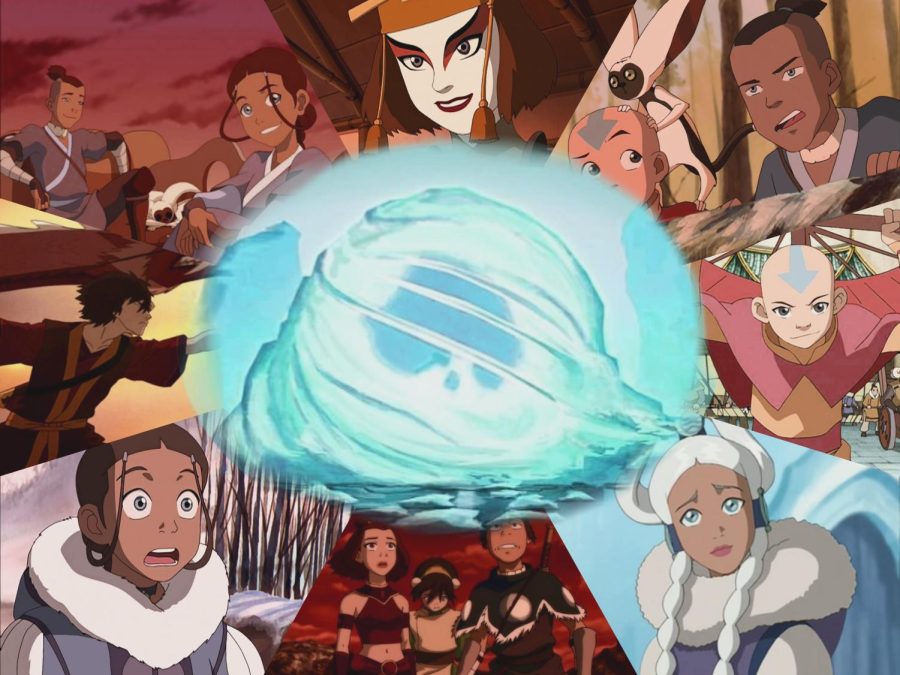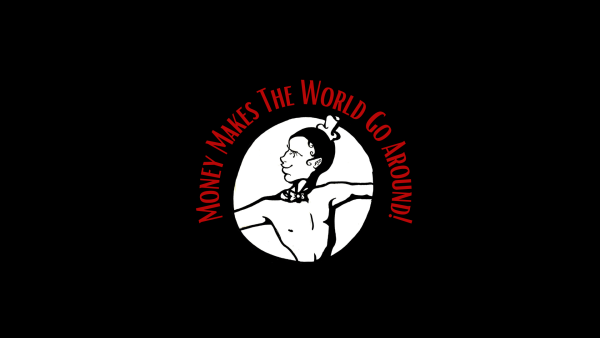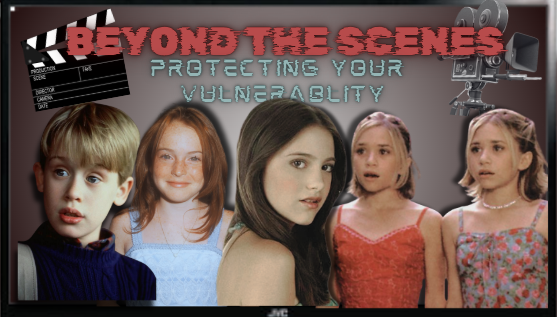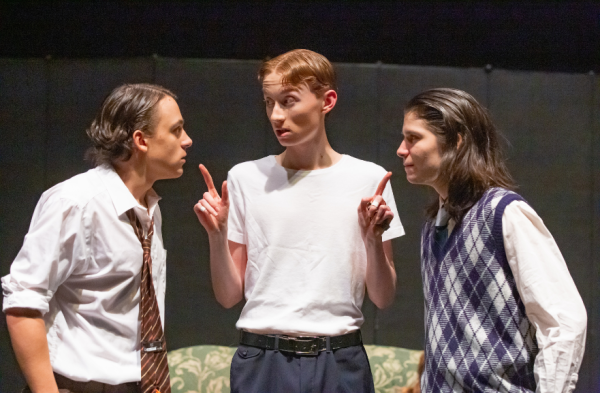The Woman in the Iceberg
Who Helped Turn Avatar: the Last Airbender into Such a Classic?
Compilation of screenshots from Avatar: The Last Airbender. Characters featured include Katara, Sokka, Aang, Zuko, Suki, Yue, and Toph. At the center is the iconic iceberg from which Aang was discovered.
Avatar: The Last Airbender is a Nickelodeon staple of many childhoods for teenagers and young adults today. However, despite the target demographic of the cartoon being children (rated TV Y-7), Avatar has managed to appeal to adults with its complex characters, overarching plotline, and mature themes. Having recently been added to North American Netflix, Avatar has proven that it has not lost its charm as it sweeps in old fans once again and garners thousands of new ones.
The show takes place in a fictitious world inspired by Taoist and Hindu cultures with an all Asian cast of characters who have the ability to “bend” elements such as water, earth, fire, and air. The series follows Aang—the Avatar and prophesied master of all four elements—and his friends as they endeavor to overthrow the imperialistic Fire Nation. Despite the fantasy setting, Avatar construes a cohesive plotline riddled with complex, real-world themes such as war, genocide, spirituality, abuse, found family, and more. With an average audience score of 99% on Rotten Tomatoes and a rating of 9.2/10 stars on IMDb, Avatar: The Last Airbender has achieved critical acclaim and a well-beloved spot in audiences’ hearts.
So who was behind it?
Bryan Konietzko and Michael Dante DiMartino—colloquially referred to as a pair within the fandom as Bryke—are the co-creators of the show and largely credited for most of its success. Originally coming up with the idea for Avatar in 2002, the pair is responsible for the premise, the concept for each of the characters, and the overall cultural landscape of this world they invented. Alongside Bryke, there was an incredible team of people behind the scenes, including the writers, the animators, martial arts consultants.
As you enter a niche in the Avatar fanbase, you will find a greater appreciation for Aaron Ehasz, the head writer on the Avatar team. For all that Bryke were able to create a gorgeous tapestry of worldbuilding and character concepts, their writing technique lacked the depth to match. Ehasz is often credited for filling in those gaps with his own creativity. For a better understanding of just how much Ehasz’s influence elevated the experience for the audience, take a look at the top-rated episodes of the show and their writing credits:
According to IMDb, the top 10 rated episodes of Avatar are:
- Sozin’s Comet: Part 4 – Avatar Aang (9.9) — written by Bryke
- Sozin’s Comet: Part 3 – Into the Inferno (9.8) — written by Bryke
- The Siege of the North: Part 2 (9.7) — written by Aaron Ehasz
- The Crossroads of Destiny (9.6) — written by Aaron Ehasz
- Sozin’s Comet: Part 2 – The Old Masters (9.5) — written by Aaron Ehasz
- Zuko Alone (9.5) — written by Elizabeth Welch Ehasz
- The Avatar and the Firelord (9.5) — written by Elizabeth Welch Ehasz
- The Day of Black Sun: Part 2 – The Eclipse (9.4) — written by Aaron Ehasz
- The Siege of the North: Part 1 (9.4) – written by Aaron Ehasz
- The Boiling Rock: Part 2 (9.3) — written by Joshua Hamilton
But enough about these men. Although Bryke’s and Ehasz’s names are often tossed around by Avatar fans, one hardly ever hears about Elizabeth Welch Ehasz (Aaron Ehasz’s now ex-wife) and her contributions to the overall quality of the show. Her name may only be in the principal writing credits for the top 10 episodes twice, but those two episodes are crucial to the top-rated episodes’ success.
One could argue that the heart of the show lies in its revolutionary (for the time period in 2005) animation, its close resemblance to real-world issues, its impeccable score, or any other quality that helps contribute to its charm. But one aspect of the show that fans hold especially dear is its remarkable character arcs. In particular, the most popular one: the Zuko redemption arc.
Previously a notorious antagonist hellbent on kidnapping the Avatar in order to restore his honor, Prince Zuko of the Fire Nation becomes a friend to Aang and a beloved supporting character. In recent years, redemption arcs have become a norm in entertainment media—a common “trope subversion” that is rarely fulfilling. Zuko’s arc, however, is a classic of its nature and often used as an example by film analysts on YouTube when critiquing other media that attempts at redeeming its villainous characters.
This is where Elizabeth Welch Ehasz comes in. Where Bryke had vision, Team Ehasz—Aaron and Elizabeth—had the writing skills to develop the characters in meaningful ways. They knew how to challenge characters for their growth, which is where Bryke failed. In the episode “Zuko Alone,” Elizabeth fleshes out Zuko in a way that skyrockets him from a mildly sympathetic antagonist with questionable morals to a traumatized teenager who is, ultimately, redeemable and likable. She explores emotional depths even “adult” shows struggle to address, creating a classic of TV history.
Elizabeth Welch and Aaron Ehasz were not invited back to work on the Avatar: The Last Airbender spin-off Avatar: The Legend of Korra and their absence is palpable throughout the series. Without Team Ehasz pulling their weight, Bryke had more creative control, making their not-quite-as-satisfactory writing skills more apparent. The cameos of the original cast of Avatar are off-putting and out of character, and the writing for the new main cast also falls short of anywhere compelling. While the stakes of Korra are arguably higher, the fallout does not match the buildup, which makes it more difficult to be attached to each of the characters. And, strangely enough, a large portion of its runtime is dedicated to a wholly unnecessary love triangle between three of the leads—a testament to Bryke’s odd priorities.
Despite her sizable contributions to Avatar’s success, Elizabeth Welch Ehasz is hardly renowned in any sense of the word. In fact, Avatar: The Last Airbender is the only writing credit to her name, which poses the question: where did she go? While Bryke and Aaron Ehasz have received Emmy nominations and gone on to work on other projects, Elizabeth remains wholly unknown. There could be many reasons for this. For one, Aaron Ehasz has a history of gaslighting women in the workplace—or maybe her disappearance is purely of her own volition. Regardless of her lack of acclaim, her part in Avatar’s success should never be downplayed.
For all her work developing Avatar: The Last Airbender into the classic it is today, Elizabeth Welch Ehasz is already a name worth knowing and appreciating.
Your donation will support the student journalists of Huntington Beach High School. Your contribution will allow us to cover our annual website hosting costs.
Thank you for supporting our program!







